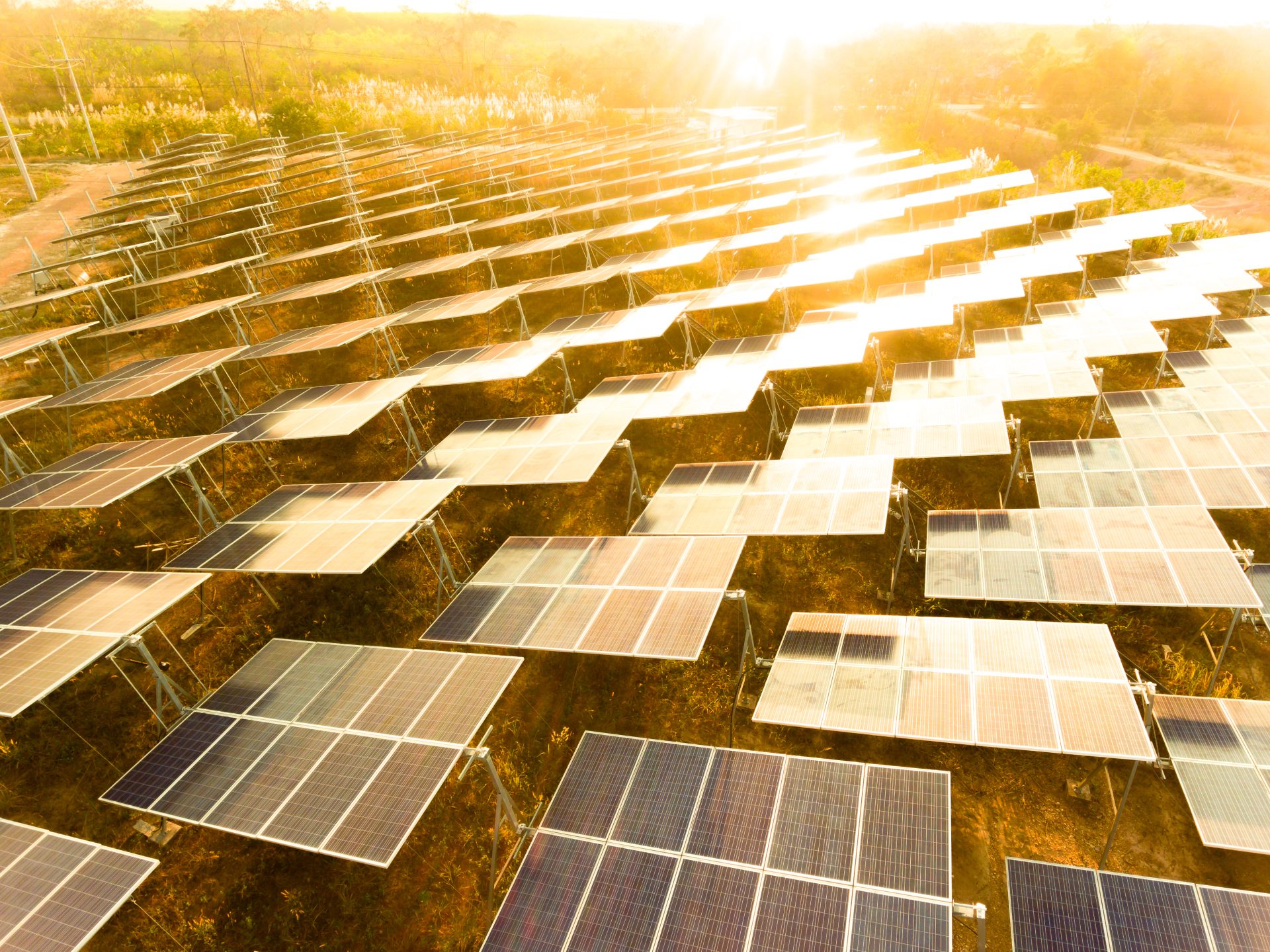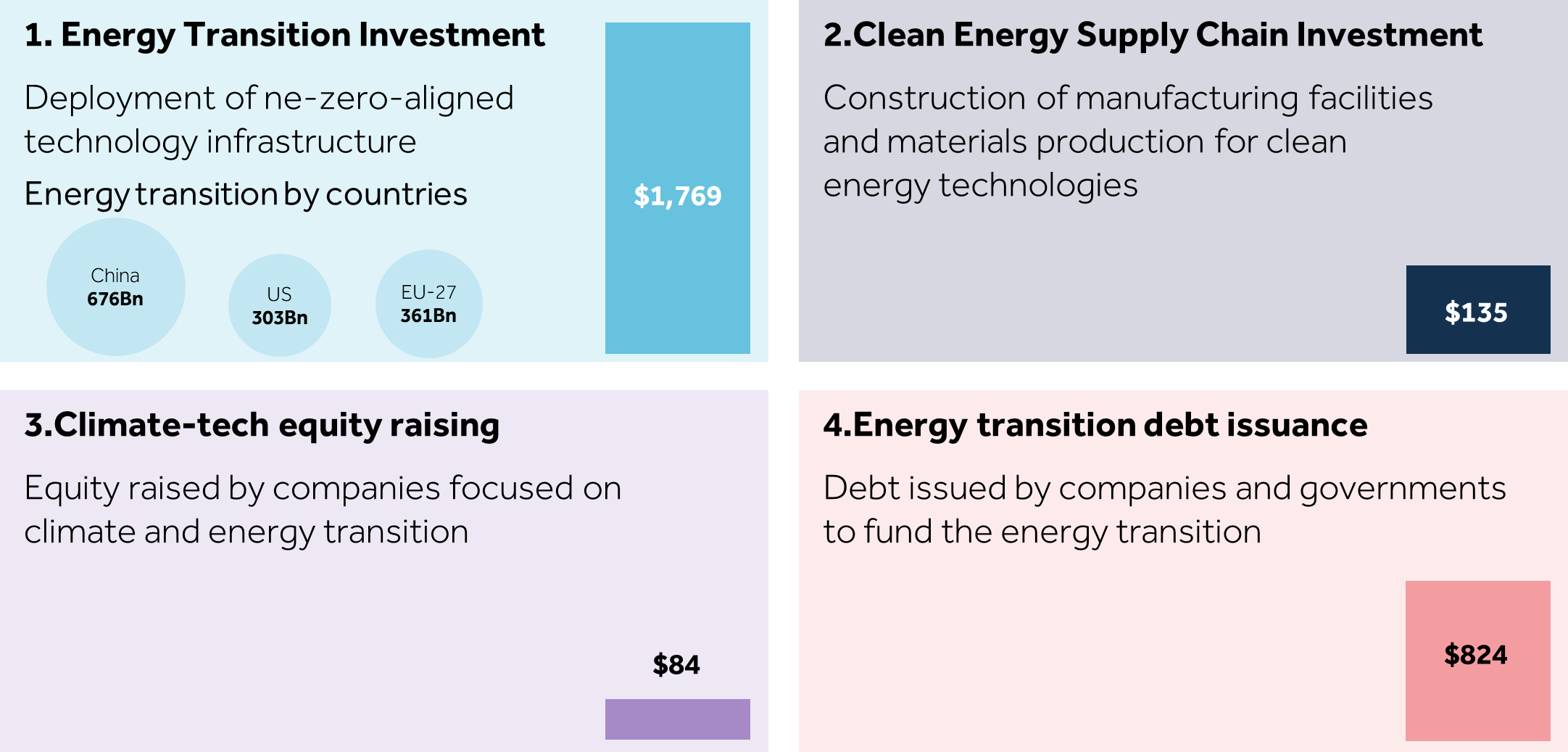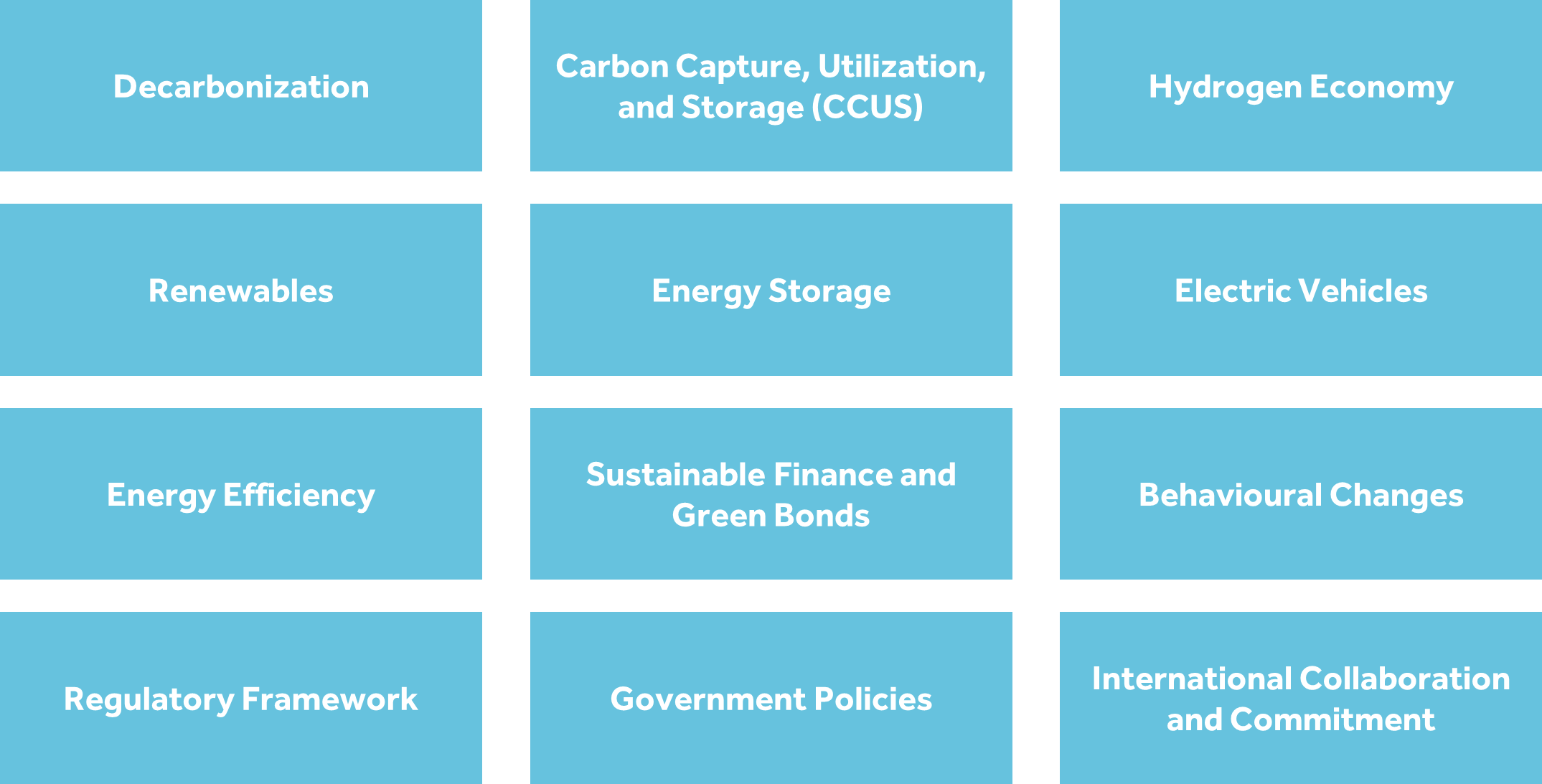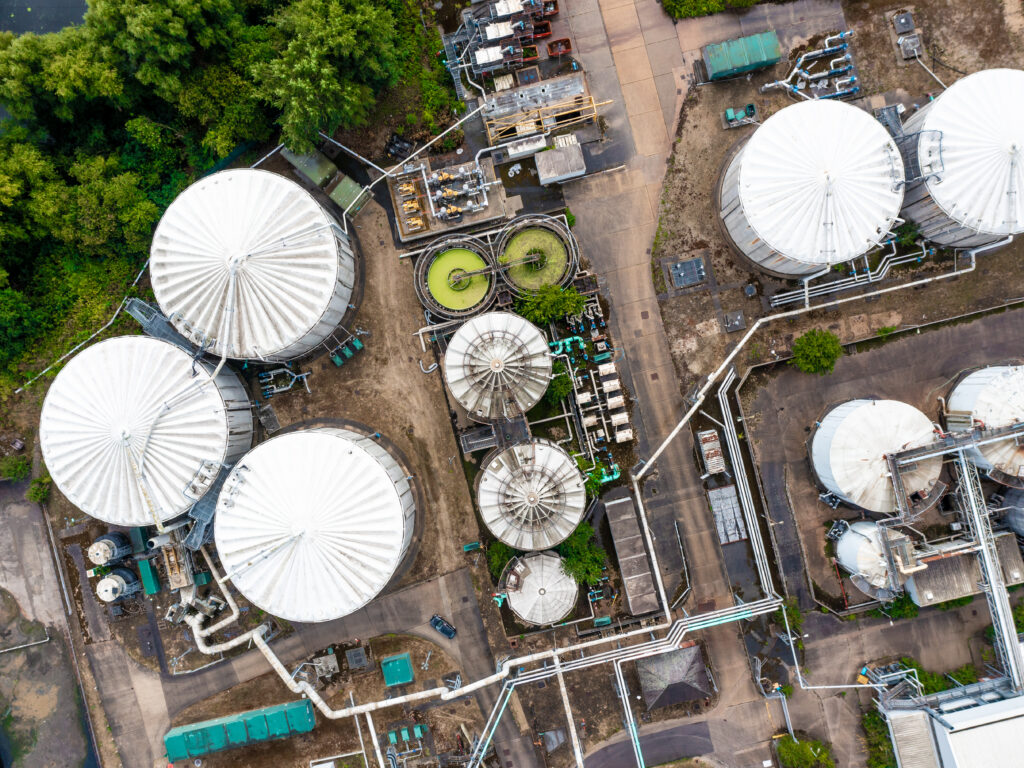
Introduction
As the global community grapples with the escalating urgency of climate change, the transition to net-zero carbon emissions has emerged as a critical and defining goal for the 21st century. Considering the criticality of halting the progression of climate change, this transition is not just an environmental necessity but a strategic imperative for businesses, governments, and societies globally. Simply put, achieving net-zero carbon emissions means balancing each molecule of greenhouse gas (GHG) emitted with one removed from the atmosphere. This balance involves a combination of reducing emissions through cleaner technologies and offsetting any remaining emissions through natural or technological means.
The race to net-zero is defined by pivotal milestones set against the backdrop of global agreements such as the Paris Agreement. Many countries and corporations have committed to reaching net-zero emissions by 2050, with interim goals for 2030 and 2040. These timelines necessitate immediate and sustained action across all sectors of the economy. The Paris Agreement, adopted in 2015, represents a landmark accord in the fight against climate change. It brings together nations in a concerted effort to limit global temperature rise to well below 2°C, and ideally to 1.5°C above pre-industrial levels. Achieving net-zero emissions is central to this mission, requiring comprehensive decarbonization strategies to be adopted and implemented across the board.
The key components of global investment in net-zero transition for 2023, as reported by Bloomberg NEF, comprises the following 4 categories:
1. Energy Transition Investment (comprising of the deployment of clean technologies such as renewable energy projects, electric vehicles, power grids and hydrogen)
2. Investment in the Clean Energy Supply Chain
3. Venture Capital, Private Equity and Public Markets Investment in Climate-tech Companies
4. Debt Issuance for Energy Transition
The below illustration provides a glimpse of the investments in each of these four categories for the year 2023.
Key Components of Global Investment in Net-Zero Transition for 2023
Source: Bloomberg NEF (BNEF)
Highlights of Energy Transition Investment in 2023
- Double digit year-on-year growth: Investment in the Energy Transition saw a 17% year-on-year increase in 2023, reaching $1.77 trillion.
- Sectors fueling the growth: Further, in 2023, investments in electrified transport surpassed those in renewables, growing by 36% year-on-year to $636 billion. Meanwhile, renewables experienced an 8% year-on-year growth, amounting to $623 billion.
- Countries at the forefront of these investments: China continues to lead in energy transition investment, accounting for 38% of the global total with $676 billion. However, the US showed significant growth, spending $303 billion, while the 27 European Union members collectively invested $360 billion.
The transition to net-zero carbon emissions is a complex and multi-faceted process that involves significant changes across various sectors of the economy. Here’s an overview of the key components and strategies involved in this transition.
Key Components of Net-Zero Transition

Decarbonization and CCUS
Decarbonization involves shifting from fossil fuels to low-carbon energy sources and enhancing energy efficiency. Key strategies include adopting renewable energy, enhancing energy efficiency, and deploying carbon capture, utilization and storage (CCUS) technologies. By storing captured CO2 underground, the impact of ongoing emissions can be mitigated while transitioning to cleaner energy systems. With technologies harnessing wind, solar, hydro, and bioenergy becoming more efficient and cost-effective, renewable energy is at the forefront of the net-zero transition. driving substantial growth in their adoption. This shift not only reduces emissions but also promotes energy security and economic resilience.
Hydrogen Economy
Hydrogen is emerging as a versatile energy carrier with the potential to decarbonize various sectors, including industry, transport, and power generation. Investments in hydrogen technology are growing rapidly, with the Hydrogen Council estimating that global investments could reach $320 billion by 2030. Major energy companies, such as Shell, BP, TotalEnergies and industrial giants like Siemens and Thyssenkrupp are investing heavily in developing green hydrogen production, storage, and distribution infrastructure.
The global race to harness green hydrogen is intensifying, with the EU, the U.S., and China committing substantial resources and ambitious targets to revolutionize this clean energy frontier:
- The EU has committed billions of euros to green hydrogen projects to build 40 GW of electrolytic capacity within EU by 2030.
- The U.S. Department of Energy has launched the Hydrogen Energy Earthshot initiative, aiming to reduce the cost of clean hydrogen by 80% to $1 per kilogram within a decade.
- China is investing heavily in green hydrogen as part of its 14th Five-Year Plan, aiming to integrate it into its broader strategy for reducing carbon emissions.
Renewables
The future of energy is increasingly characterized by declining costs of renewable technologies, electrification of transportation and heating, advancements in energy storage solutions, and integration of digital technologies for energy optimization. This transition represents not only a technological shift but also a profound transformation of our economic and social systems. Renewable energy sources such as wind, solar, and hydropower are expected to dominate the energy mix in the coming decades. The costs of these technologies have been steadily decreasing, making them more competitive with traditional fossil fuels. According to, International Renewable Energy Agency (IRENA), there has been a reduction of more than 80% in the average capital costs of construction of solar power plants in the past decade alone. These trends are likely to continue, driven by technological advancements and economies of scale.
Energy Storage
Energy storage solutions are another critical component of the new energy outlook. As the share of intermittent renewable energy sources like wind and solar increases, the need for reliable energy storage becomes more pressing. Technologies such as batteries, pumped hydro storage, and emerging options like hydrogen storage are essential for ensuring a stable and reliable energy supply. The integration of digital technologies, including smart grids and artificial intelligence, will further enhance the efficiency and resilience of the energy system.
Electric Vehicles (EVs)
The electrification of transportation and heating is expected to play a major role in reducing emissions. EVs are becoming increasingly popular, driven by advancements in battery technology, reductions in costs, and supportive government policies. The International Energy Agency (IEA) reported that from 2022 to 2023, investments in electric vehicle (EV) and battery manufacturing reached nearly USD 500 billion, with approximately 40% of these funds already allocated. More than 20 leading automobile manufacturers, accounting for over 90% of global car sales in 2023, have committed to ambitious electrification goals. When aggregating the targets of these industry giants, projections suggest that over 40 million electric vehicles could be sold by 2030, aligning with current policy forecasts for widespread adoption. The significant adoption of electric vehicles across various categories—cars, vans, trucks, buses, and two/three-wheelers—will lead to a reduction in oil demand by 6 million barrels per day by 2030 under the Stated Policies Scenario, by 10 million barrels per day by 2035.
Energy Efficiency
Energy efficiency is often an underappreciated aspect of the net-zero equation. By using energy more effectively, significant reductions in emissions can be achieved. This involves upgrading infrastructure to modern, energy-efficient standards, optimizing industrial processes to minimize energy waste, and improving building designs for better insulation and energy management.
Sustainable Finance and Green Bonds
There is a growing recognition that climate risks pose significant financial risks, and as a result, investors are increasingly integrating environmental, social, and governance (ESG) factors into their decision-making processes. Green bonds, which are specifically earmarked to raise money for climate and environmental projects, have seen substantial growth. According to Bloomberg, the issuance of impact bonds, including green, social, sustainability, and sustainability-linked bonds, reached $939 billion in 2023, marking a 3% increase compared to the same period last year.
Behavioral Changes
In addition to technological advancements, achieving net-zero emissions will require significant changes in consumer behavior and societal norms, going beyond reuse, recycle, and reduce. This includes reducing energy consumption through lifestyle changes, such as using public transportation instead of private cars, improving energy efficiency in homes and workplaces, adopting more sustainable consumption patterns, among others. Public awareness and education campaigns will be vital in promoting these changes and encouraging individuals and organizations to act responsibly.
Regulatory Framework and Government Policies
Government policies and regulations will continue to be a key driver of the energy transition. Policymakers are implementing a range of measures to incentivize the adoption of clean energy technologies and discourage the use of fossil fuels. Carbon pricing mechanisms, such as carbon taxes and cap-and-trade systems, are being used to put a price on carbon emissions, making it more expensive to emit greenhouse gases and encouraging businesses to invest in cleaner alternatives. Comprehensive regulatory efforts, such as renewable energy mandates, energy efficiency standards, and subsidies for clean energy technologies are also playing an important role in driving the transition – ensuring that the shift towards sustainable energy is both effective and equitable, paving the way for a cleaner, more resilient future.
International Cooperation and Commitment
Climate change is a global problem that requires a coordinated response – making international cooperation an absolute must in achieving global net-zero targets. The Paris Agreement provides a framework for international collaboration, with countries committing to set and achieve their own climate targets while working together to support developing nations in their transition efforts. Continued collaboration through international forums and partnerships will be crucial for sharing knowledge, technology, and resources to accelerate the global energy transition.
Conclusion
In conclusion, the transition to net-zero carbon emissions is a complex but imperative journey. It requires collaboration across all sectors of society, underpinned by robust regulatory frameworks, technological innovation, and substantial financial investments.
Investment Trend Towards Net Zero Scenario
Source: Bloomberg NEF (BNEF); The 2023 figure excludes data for clean shipping & fuel cell vehicles
- According to the investments reported by BNEF, to align with Paris-aligned Net Zero Scenario, global energy transition investment needs to average $4.84 trillion per year between 2024 and 2030 – which is approximately three times the $1.77trillion spent in 2023.
- Investment in 2030s is expected to reach $6.59 trillion per year in the Net Zero Scenario – which is a fourfold increase from 2023 levels. Further, in the 2040s’s the investment is expected to be $7.59 trillion per year – a 15% increase over the 2030’s out of which electrified transport spending alone is expected to account for 56% -or $4.26 trillion per year.
By embracing this transition, we can forge a path toward a sustainable, resilient future, ensuring the health of our planet for generations to come. The future of energy is bright, with in electrified transport, renewable energy, carbon capture technologies, efficient energy storage and power grids paving the way for a cleaner and more sustainable world. By working together, we can achieve the ambitious goal of net-zero emissions and secure a healthier, more prosperous future for all.
References:
- BloombergNEF (2024)
- Bloomberg (2024)
- International Energy Agency (2024)
- Global Energy Association (2024)
- The World Economic Forum (2023)
- Hydrogen Council (2023)
- United Nations Environment Programme (2023)
- United Nations (2023)
- POLITICO (2022)
- The U.S. Department of Energy (2021)
- Reso Analysis



